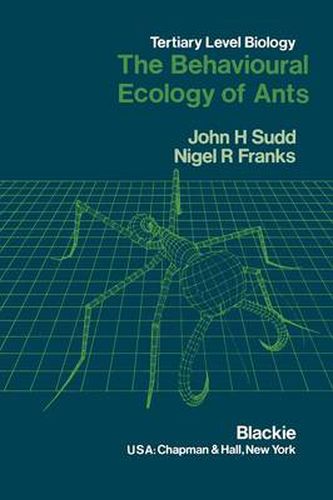Readings Newsletter
Become a Readings Member to make your shopping experience even easier.
Sign in or sign up for free!
You’re not far away from qualifying for FREE standard shipping within Australia
You’ve qualified for FREE standard shipping within Australia
The cart is loading…






This title is printed to order. This book may have been self-published. If so, we cannot guarantee the quality of the content. In the main most books will have gone through the editing process however some may not. We therefore suggest that you be aware of this before ordering this book. If in doubt check either the author or publisher’s details as we are unable to accept any returns unless they are faulty. Please contact us if you have any questions.
This book is concerned with two problems: how eusociality, in which one individual forgoes reproduction to enhance the reproduction of a nestmate, could evolve under natural selection, and why it is found only in some insects-termites, ants and some bees and wasps. Although eusociality is apparently confined to insects, it has evolved a number of times in a single order of insects, the Hymenoptera. W. Hamilton’s hypothesis, that the unusual haplodiploid mechanism of sex determination in the Hymenoptera singled this order out, still seems to have great explanatory power in the study of social ants. We believe that the direction, indeed confinement, of social altruism to close kin is the mainspring of social life in an ant colony, and the alternative explanatory schemes of, for example, parental manipu lation, should rightly be seen to operate within a system based on the selective support of kin. To control the flow of resources within their colony all its members resort to manipulations of their nestmates: parental manipulation of offspring is only one facet of a complex web of manipul ation, exploitation and competition for resources within the colony. The political intrigues extend outside the bounds of the colony, to insects and plants which have mutualistic relations with ants. In eusociality some individuals (sterile workers) do not pass their genes to a new generation directly. Instead, they tend the offspring of a close relation (in the simplest case their mother).
$9.00 standard shipping within Australia
FREE standard shipping within Australia for orders over $100.00
Express & International shipping calculated at checkout
This title is printed to order. This book may have been self-published. If so, we cannot guarantee the quality of the content. In the main most books will have gone through the editing process however some may not. We therefore suggest that you be aware of this before ordering this book. If in doubt check either the author or publisher’s details as we are unable to accept any returns unless they are faulty. Please contact us if you have any questions.
This book is concerned with two problems: how eusociality, in which one individual forgoes reproduction to enhance the reproduction of a nestmate, could evolve under natural selection, and why it is found only in some insects-termites, ants and some bees and wasps. Although eusociality is apparently confined to insects, it has evolved a number of times in a single order of insects, the Hymenoptera. W. Hamilton’s hypothesis, that the unusual haplodiploid mechanism of sex determination in the Hymenoptera singled this order out, still seems to have great explanatory power in the study of social ants. We believe that the direction, indeed confinement, of social altruism to close kin is the mainspring of social life in an ant colony, and the alternative explanatory schemes of, for example, parental manipu lation, should rightly be seen to operate within a system based on the selective support of kin. To control the flow of resources within their colony all its members resort to manipulations of their nestmates: parental manipulation of offspring is only one facet of a complex web of manipul ation, exploitation and competition for resources within the colony. The political intrigues extend outside the bounds of the colony, to insects and plants which have mutualistic relations with ants. In eusociality some individuals (sterile workers) do not pass their genes to a new generation directly. Instead, they tend the offspring of a close relation (in the simplest case their mother).